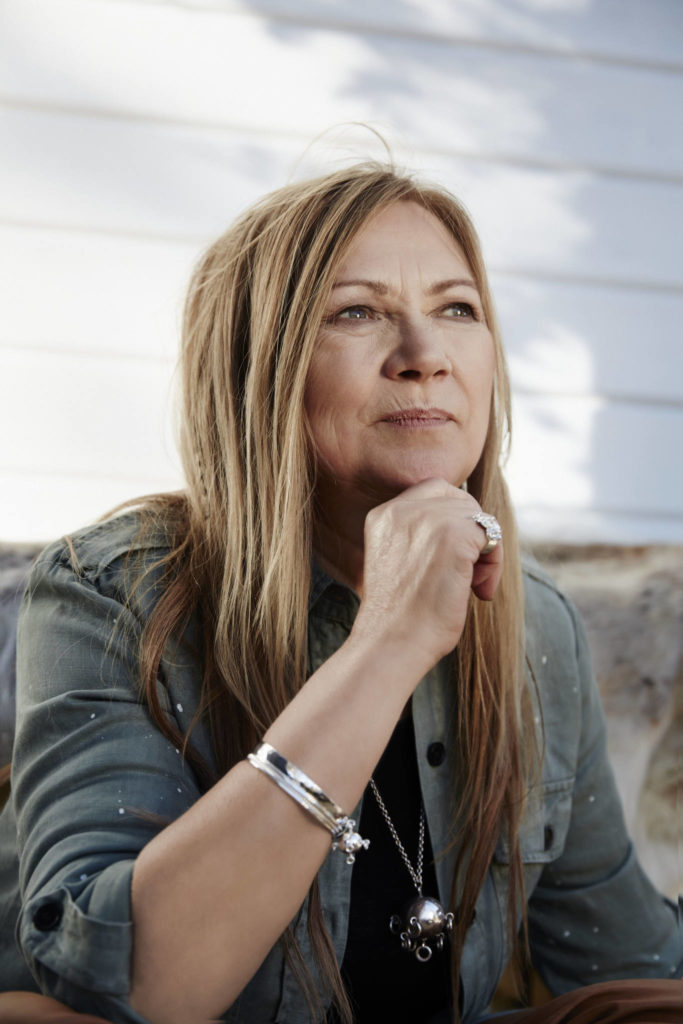“Some melodies I pick from the trees like fruit”
It’s a debut in a two fold respect: Sámi singer Mari Boine’s first album completely in English and her first album for the label MPS, recorded by producer Tobias Frøberg.
A melancholic, spherical pop sound meets a sophisticated lyrical concept.
“Some melodies I pick from the trees like fruit”, says Boine about her songwriting process.
The singer has been the unofficial ambassador of the Sámi people in the far north of Scandinavia for more than two decades, but she is also a poet in tune with nature.
But of course, songwriting doesn’t always come this easy.
“Other songs are harder to shape”, adds Boine.
“I have been singing in my native language for 30 years.
It was time to do something different.
It was a real challenge to compose the music that I dreamt about when I was young.”
For the first time, Boine has recorded a whole album (except the song “Adine & Isak“) in English.
It’s a genuine pop record. Large Scandinavian hallways full of reverb open up, the clear voice of Boine floating over spherical keyboards.
The singer hasn’t sounded this young in a long time, while always maintaining a melancholic tone.
“In a way, I am going back to who I was when I started making music. What I do is storytelling about life.”
“That’s the Sámi Blues that follows me everywhere,” says Boine, who describes the sound of the record as “soft”.
“It’s not like I have left the shamanistic beat and the wilder expressions in my music. This is just another side of me.”
The sound of “See the woman” is characterized by casual 80s vibes.
This is no coincidence: when Mari Boine was in teacher training at the beginning of the 1980s, she absorbed the contemporary pop music — David Bowie, Abba, the Eurythmics and Patti Smith.
“In a way, I am going back to who I was when I started making music. What I do is storytelling about life.”
“See the woman” is an album shaped by international cooperation.
Currently, Boine lives in a secluded house overlooking Porsanger Fjord, 150 kilometers from the North Cape.
“I am like a seafarer, I go away for a month, and then I come home for a month. I get enough of cities and I need the silence.”For two weeks in May and September 2016, the Sámi artist exchanged the quiet in the far north against the hustle and bustle of the big city.
In Stockholm, she met some of the Sweden’s most acknowledged pop musicians, including cellist and singer-songwriter Linnea Olsson, who also plays with Peter Gabriel, keyboardist Robert Elovsson of Robyn’s live band, and drummer Lars Skoglund of Lykke Li fame.
Producer Tobias Frøberg, well known for his work with Ane Brun and Lisa Ekdahl, endowed some of the songs with driving discobeats (“Chasing Myself Into Reality“) and refined dub sounds (“See The Woman“).
“See the woman” is an album shaped by international cooperation.
Most lyrics are from artists descending from Australia, New Zealand, Germany, South Africa and the USA.
Mari Boine adapted them from poems, songs and prose texts over a period of several years.
It’s a work of art from a female perspective, reflecting the role of women in today’s society.
“It’s not like you fight for something, and then it’s done.
You have to be awake.
The struggle for equality is an ongoing thing”, says Boine.
She stresses the importance of the contributions of Maori singer Moana Maniapoto and the three songs by Native American activists and poets John Trudell and Joy Harjo.

“I am curious about everything in the world. I feel related to indigenous poets. They have the same fight that we Sámi have.”
“Adine & Isak“, the only Sami song here, written from children’s perspective, is dedicated to the singer’s grandchildren.In 2016, Mari turned 60. The Sámi activist and singer has not reinvented herself entirely. But she has realized the dreams of her youth, and thus extended her catalog in an astonishing way. “See The Woman” is an ethereal, enriching and utterly beautiful work of art.